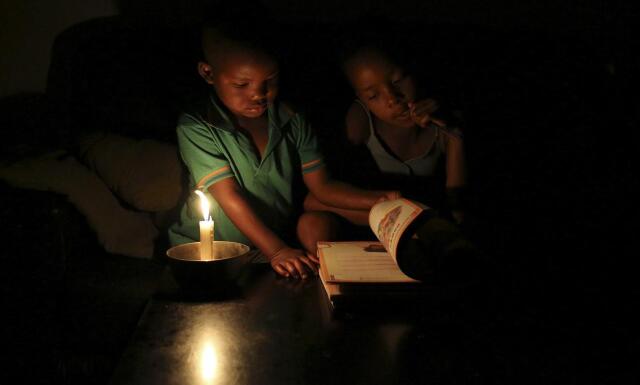The country’s citizenry has been subjected to planned power cuts for at least 88 days since the beginning of the year.
WITH no clear prospects of a potential plug to Eskom’s power drain and its effects on the ordinary person, it would be pertinent for consumers to familiarise themselves with the set stages of power cuts, what they mean, and how they affect power supply to households and businesses.
Eskom started load shedding 14 years ago to “save” its power plants from overloading and prevent the state-owned power utility from collapse. The Andre de Ruyter-led power utility’s recent incapacity has forced it to impose load shedding to boost its generator capacity.
Up until Sunday, the country’s citizenry has been subjected to planned power cuts for at least 88 days since the beginning of the year.
This past Tuesday, two generators from Kendal and Lethabo power stations tripped, forced Eskom to escalate load shedding from stage 3 to 4 immediately. For every stage the power utility carries out, thousands of megawatts would need to be shed.
This indicates that when load shedding stage 1 is carried out, there is capacity shortfall of no less than a 1,000MW.
Eskom spokesperson, Sikonathi Mantshantsha, said: “Load shedding is implemented only as a last resort due to a shortage of generation capacity. This is done to protect the integrity of the national grid. Each load shedding stage represents a shortage of 1,000MW of generation capacity.
“Should the need arise, Eskom can implement up to Stage 8, representing a shortage of 8,000MW of generation capacity.”
Mantshantsha said load shedding couldn’t be measured directly. Therefore, the power supplier uses statistical analysis to estimate what the demand for electricity would have been and compare that to the actual need for each hour under consideration.
Each stage can last for four to eight days, as Mantshantsha explained: “Load shedding Stage 1 means that the electricity demand is exceptionally high. When the need is high, the power supply comes under pressure because the power utility’s emergency resources might have run out or it is experiencing a technical issue. Power cuts last at least four hours for eight days, three times a day.
“In contrast to Stage 1, Stage 2 demand is voluntary and established to help balance the supply and demand for electricity. Here load shedding is conducted six times a day, four hours at a time, over eight days.
“Stage 3 is implemented as a preventative measure to curb increasing demand for electricity that could cause the grid to collapse. At this point, two to four daily power outages occur on a rotational scale.
“Stage 4 is considered to be the blackout stage. It is only implemented when the first three stages fail. This stage is unpredictable, and Eskom cannot provide a pre-emptive announcement when it needs to implement Stage 4. During this stage, load shedding is conducted 12 times over four days, for two hours at a time, or 12 hours over eight days.
“Stage 5 may be implemented depending on the circumstances because it could take the grid weeks to recover from a blackout. This stage is used as a recovery plan.
“At Stage 6, Eskom would have disconnected 2,000MW from the grid. This stage can last up to six times for two hours or six times for four hours over four days.
“Stage 7 requires 6,000MW of power to be withdrawn from the system to prevent the collapse of the national power grid, which forces the state-owned utility to initiate extra unplanned power cuts wherever necessary and outside of its schedules.
“Under Stage 8, consumers would spend 96 hours over eight days or 48 hours over four days in complete darkness. Before switching the electricity back on, Eskom may allow an additional 30 minutes for network switching that will not harm the power system.”
Moreover, Mantshantsha said, should Eskom fail to generate the needed power while implementing any of the eight stages, National Control would order further unplanned load shedding.
This implies that customers might be dropped off outside of the consumer-specified schedule.
He said while Eskom was the one responsible for the design of the load shedding schedule and principle, the various local municipalities had the option to make amendments to their metro’s plan. “Be that as may be, most cities have stuck to using the programme and principles set by the power utility.”
Though load shedding is implemented to “generate and save” electricity, it has its cons. It negatively affects hospitals, clinics, traffic lights, telecommunications and water supply.
Eskom is set to implement Stage 2 load shedding from 4pm on Monday.
“Since Saturday two generation units at Kriel and a unit each at Kendal, Komati, Lethabo, Majuba and Matla power stations have returned to service. A generating unit each at Kendal and Kusile power stations were taken of-line for repairs,” said Eskom spokesperson Mantshantsha.
Load shedding was suspended at 5am on Saturday due to lower demands and adequate levels of emergency generation reserves.
Mantshantsha said Stage 2 load shedding will be implemented from 4pm on Monday until midnight on Wednesday.
“We currently have 5 487MW on planned maintenance, while another 14 061MW of capacity is unavailable due to breakdowns,” Mantshantsha said.
President Cyril Ramaphosa has said that there is no quick fix for load shedding.
“Load shedding is beyond an inconvenience. It has dire consequences for nearly every part of our society from education to public safety to the provision of health services. Large and small businesses alike are losing money and the energy crisis is endangering investment and our economic recovery,” he said.
Ramaphosa has spelled out plans to increase generation capacity to end the rolling blackouts.








